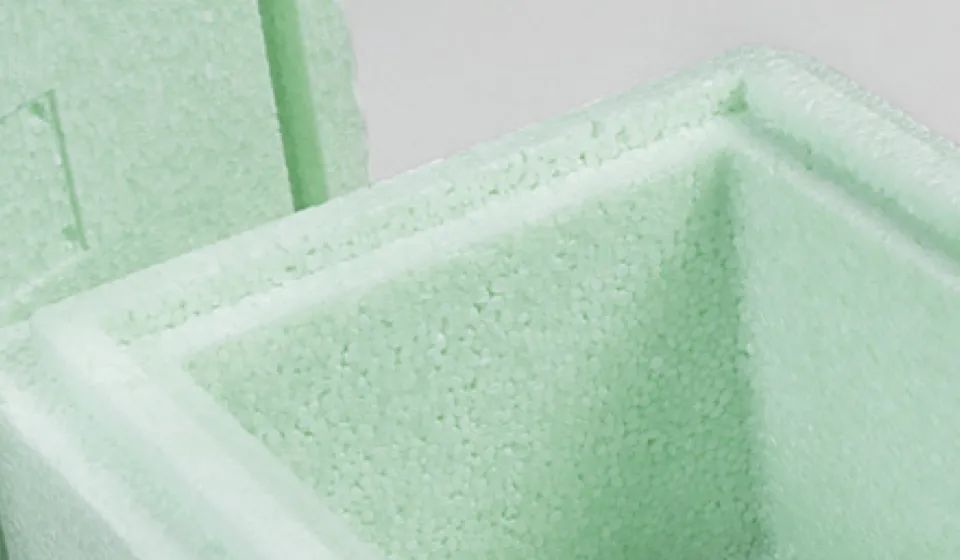
EPS is a lightweight polymer. Due to its low price, it is also the most widely used foam material in the entire packaging field, accounting for nearly 60%. Polystyrene resin is made by adding foaming agent through pre-foaming, curing, molding, drying, cutting and other processes. The closed cavity structure of EPS determines that it has good thermal insulation and low thermal conductivity. The thermal conductivity of EPS boards of various specifications is between 0.024W/m.K~0.041W/m.K. It has good heat preservation and cold preservation effect in logistics.
However, as a thermoplastic material, EPS will melt when heated and become solid when cooled, and its thermal deformation temperature is around 70 °C, which means that EPS incubators processed into foam packaging need to be used below 70 °C. If the temperature is too high, 70 °C, the strength of the box will be reduced, and toxic substances will be produced due to the volatilization of styrene. Therefore, EPS waste cannot be naturally weathered, nor can it be incinerated.
In addition, the toughness of EPS incubators is not very good, the cushioning performance is also general, and it is easy to be damaged during transportation, so it is mostly used for one-time use, for short-term, short-distance cold chain transportation, and food industries such as meat and poultry. Trays and packaging materials for fast food. The service life of these products is usually short, about 50% of the Styrofoam products have a service life of only 2 years, and 97% of the Styrofoam products have a service life of less than 10 years, causing EPS foam to be scrapped year by year, However, EPS foam is not easy to decompose and recycle, so it is the main culprit of the current white pollution: EPS accounts for more than 60% of the white garbage in ocean pollution! As the packaging material of EPS, most HCFC foaming agents are used in the foaming process, and most products will have peculiar smell. The ozone depletion potential of HCFCs is 1,000 times that of carbon dioxide. Therefore, since the 2010s, the United Nations, the United States, the European Union, China, South Korea, Japan and other relevant countries (organizations) and regions have passed legislation to prohibit or restrict the use of single-use plastics, including Styrofoam, and humans have forcibly formulated “Revised Roadmap”.
Post time: Sep-08-2022




